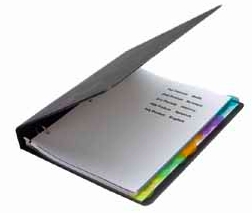
Part 2
Variables & Control, Materials, Procedures,
Reminder: other than the recommendation section,
there are to be NO YOUs/ Mes/ we etc written!!
Variables & Control
Type
in outline form, not sentence form :
I) VARIABLE TO BE CHANGED:
example:
a.
The amount of aspirin to
plants: 0 mg, 2 mg, 5 mg, 10 mg, 20 mg, 40 mg, 80 mg, 100 mg; b. amounts
administered twice each day at the same time, after dissolving in 25
ml of water.
II) VARIABLE TO BE MEASURED:
example:
a.
Resulting average growth following aspirin administration
and 3 weeks of growth time.
III) CONTROLS:
example:
a) Type of plants are all the same. 5 plants for each category.
b) Age of plants: all started at the same time
b) Same water and amount administered at the same time of day
c) Room temperature, amount of light, and soil the same for all plants
The control group would be : The group
which never receives aspirin
-A VARIABLE is either one factor YOU
CHANGE in an experiment or is one factor you are trying TO MEASURE
in an experiment which results from that change.
-A CONTROL GROUP is a separate experimental
group which is in a "normal" condition in which you do
NOT apply the VARIABLE YOU ARE CHANGING IN THE OTHER EXPERIMENTAL
GROUPS.
-Most
experiments need a CONTROL GROUP, |
(be
as specific as possible-- list everything you will change including
amounts, intervals, conditions,-- everything!)
-the VARIABLE you are studying and the one item
you are CHANGING in your experimental to find
it's effect on your subjects.
example: In our example experiment above, the ONE VARIABLE you
would CHANGE could be different amounts of aspirin your different plants are
given in water. All the plants would receive the same amount of water and light.
However, you would list the actual aspirin concentrations to be given to the
different plants
-Write
down the VARIABLE you are MEASURING,
the specific effect you are trying to determine as a result of changing
the VARIABLE . The MEASURED VARIABLE would
be the growth rate of the plants.
-Write
down HOW you will establish a CONTROL GROUP...
a group of subjects under "normal" conditions. The CONTROL
group is used for a standard, for comparison with the experimental subjects.
Our plant experiment would have to contain 1 group of plants given NO
ASPIRIN... this group would be our CONTROL GROUP.
-Write
down a list of all those factors which must NOT BE ALLOWED TO CHANGE...
factors which must remain the same in ALL GROUPS during the experiment...
these factors are known as VARIABLES TO BE CONTROLLED, or simply, "CONTROLS"
-Don't
get "CONTROLS" mixed up with the term "CONTROL GROUP".
In our plant experiment, we would make sure ALL PLANT GROUPS were given
the same type and amounts of water at the same time of day; they would
be exposed to the same controlled temperatures, provided identical environments,
lighting would remain the same, etc.
Materials
In
a numbered list, describe every item you will need to run this experiment.
Include quantities, sizes, brands, colors, shapes, tools, volumes.
Use metrics when possible.
Use diagrams or sketches if needed.
Procedures
are the step by step recipe of how you will perform
you experiment! Be very complete. Could someone in another state perform
you lab EXACTLY as you did?
Your procedure is one of the most important parts of your project! The way
you plan and design your experiment will make or break your project. Judges
look closely at procedures to see if EXPERIMENTAL DESIGN really answered the
QUESTION that was set out to be solved.
In complete sentences, written in past tense, write a
minimum of a 15 step procedure.
Be specific.
Use diagrams, sketches, or photos if necessary.
Do
not include steps involving library research, obtaining materials, writing
reports, etc. Start with the experiment itself.
Tell how often and what you
will be measuring.
BE DETAILED!! The procedures are so detailed that anyone
reading them could perform your experiments EXACTLY as you did them with
EXACTLY
the same size, quantity, brands of equipment, subjects, etc.
-Make sure you use a LARGE number of subjects/test runs in your experimentation
or the results will not be believable leaving the experiment useless.
Points to Remember:
1. Each section is to be on it's own page.
2.
Same font and size as research paper
3. 1 1/2 point spacing
4. NO ME's, I's,
or YOUs -
...... always written in a 3rd person